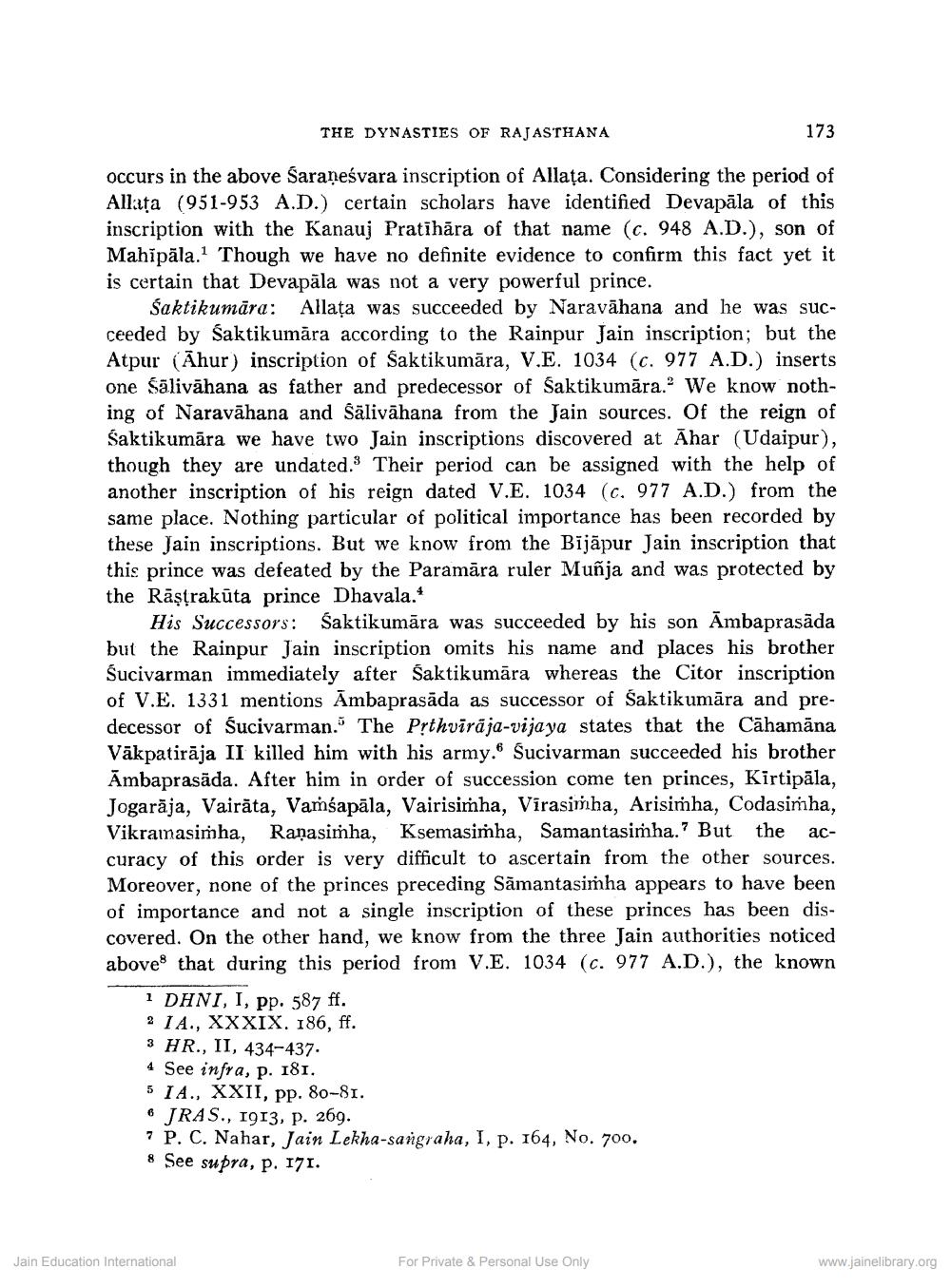________________
THE DYNASTIES OF RAJASTHANA
173
occurs in the above Saraṇeśvara inscription of Allața. Considering the period of Allata (951-953 A.D.) certain scholars have identified Devapāla of this inscription with the Kanauj Pratīhāra of that name (c. 948 A.D.), son of Mahīpāla.1 Though we have no definite evidence to confirm this fact yet it is certain that Devapāla was not a very powerful prince.
Saktikumāra: Allaţa was succeeded by Naravāhana and he was succeeded by Śaktikumāra according to the Rainpur Jain inscription; but the Atpur (Ahur) inscription of Saktikumāra, V.E. 1034 (c. 977 A.D.) inserts one Sālivāhana as father and predecessor of Saktikumāra.? We know nothing of Naravāhana and Sälivāhana from the Jain sources. Of the reign of Śaktikumāra we have two Jain inscriptions discovered at Āhar (Udaipur), though they are undated. Their period can be assigned with the help of another inscription of his reign dated V.E. 1034 (c. 977 A.D.) from the same place. Nothing particular of political importance has been recorded by these Jain inscriptions. But we know from the Bījāpur Jain inscription that this prince was defeated by the Paramāra ruler Muñja and was protected by the Rāştrakūta prince Dhavala."
His Successors: Saktikumāra was succeeded by his son Ambaprasāda but the Rainpur Jain inscription omits his name and places his brother Sucivarman immediately after Saktikumāra whereas the Citor inscription of V.E. 1331 mentions Ambaprasāda as successor of Saktikumāra and predecessor of Sucivarman. The Prthvīrāja-vijaya states that the Cāhamāna Vākpatirāja II killed him with his army. Sucivarman succeeded his brother Āmbaprasāda. After him in order of succession come ten princes, Kirtipāla, Jogarāja, Vairāta, Vamśapāla, Vairisimha, Virasimha, Arisimha, Codasimha, Vikramasimha, Ranasimha, Ksemasimha, Samantasimha. But the accuracy of this order is very difficult to ascertain from the other sources. Moreover, none of the princes preceding Samantasimha appears to have been of importance and not a single inscription of these princes has been discovered. On the other hand, we know from the three Jain authorities noticed above that during this period from V.E. 1034 (c. 977 A.D.), the known
I DHNI, 1, pp. 587 ff. 2 1 A., XXXIX. 186, ff. 3 HR., II, 434-437. 4 See infra, p. 181. 5 I A., XXII, pp. 80-81. 6 JRAS., 1913, p. 269. ? P. C. Nahar, Jain Lekha-sangraha, I, p. 164, No. 700. 8 See supra, p. 171.
Jain Education International
For Private & Personal Use Only
www.jainelibrary.org




